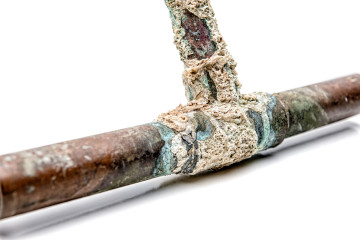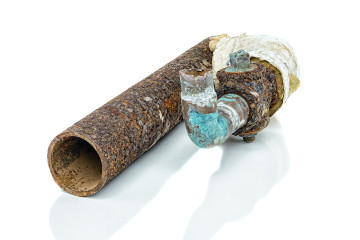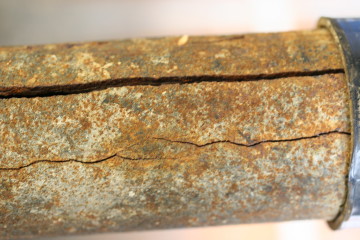1. Does your piping system include defective products such as polybutylene or yellow brass fitted PEX systems?

In polybutylene pipes, common water additives such as chlorine attack “poly” pipes and fittings, leading to cracking and undetected leaks. Left unaddressed, these cracks can result in catastrophic property damage like flooding and mold infestation. Certain PEX pipe systems used fittings made with high-zinc yellow brass. These fittings are subject to dezincification, which can also cause disastrous leaks.
2. Is your building over 25 years old?

Age-related problems such as deterioration and corrosion are common causes of leaks. As copper and galvanized piping systems age, other signs of problems in a supply water system include low water pressure, odors and poor tasting and discolored water. These problems often lead to resident dissatisfaction and costly repair expenses.
3. Do you have loose or damp pipe insulation?

These are indicators that you may have a problem lurking in your hydronic heating and cooling pipes. Hydronic problems tend to occur in climates with hot summers. HVAC piping systems wear out more quickly because of condensation on the exterior of the pipe, which wears away the pipe’s insulation, accelerating corrosion from the outside in.
4. Is your property experiencing slow draining water, odors or backups?

These symptoms can be indicators of a failing drain, waste and vent system. Corrosion of cast iron drain, waste and vent (DWV) piping can become a problem in older properties. Knowing what to look for can help avoid excessive blockages, total system failure, and extensive water damage.
If you answered “yes,” or “I don’t know” to any of these questions, it might be time to plan and prepare for any needed repairs or future pipe replacements. Contact us to arrange a free property evaluation and assessment of your piping system.

